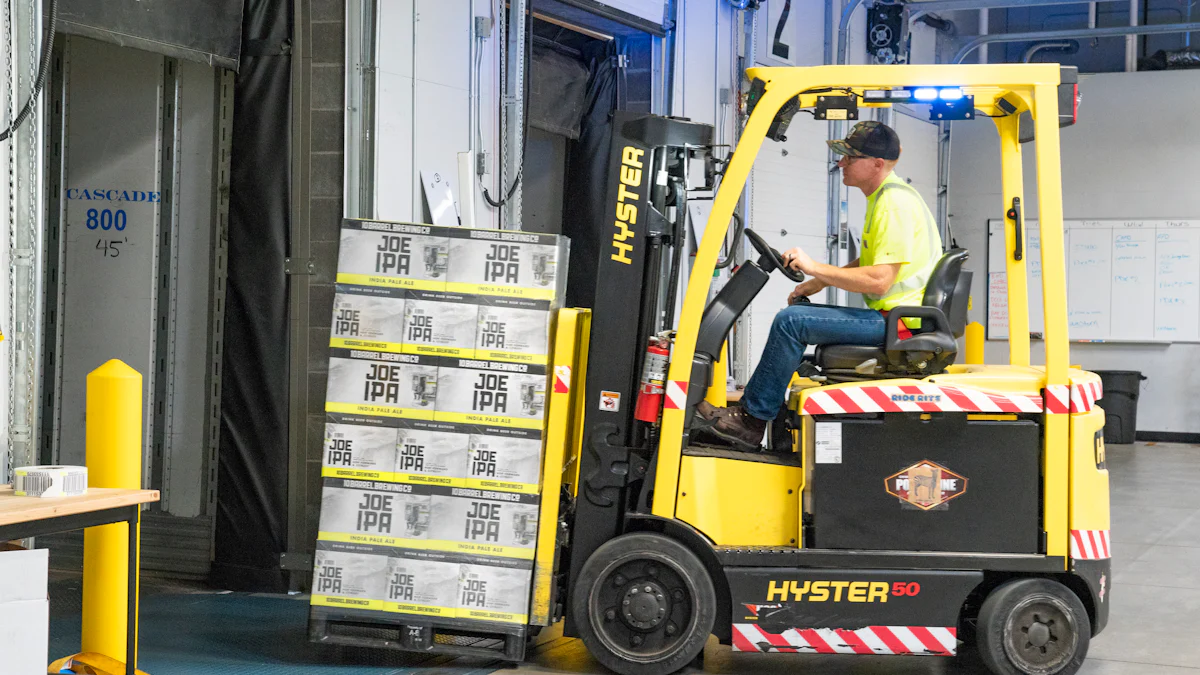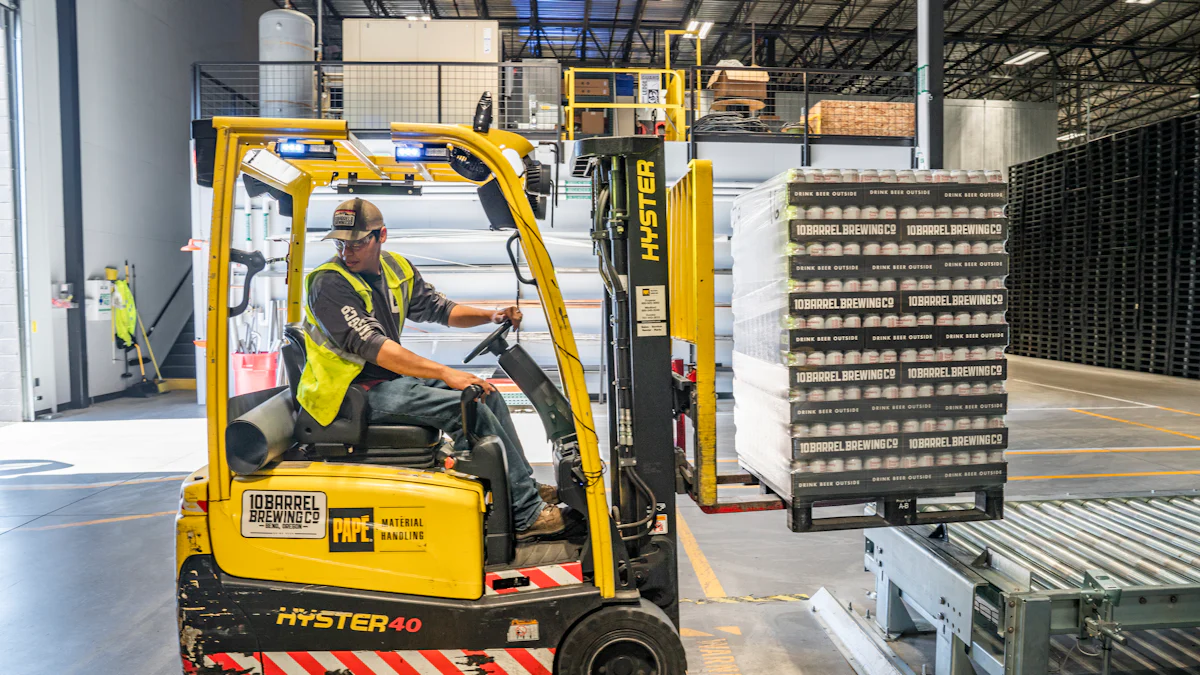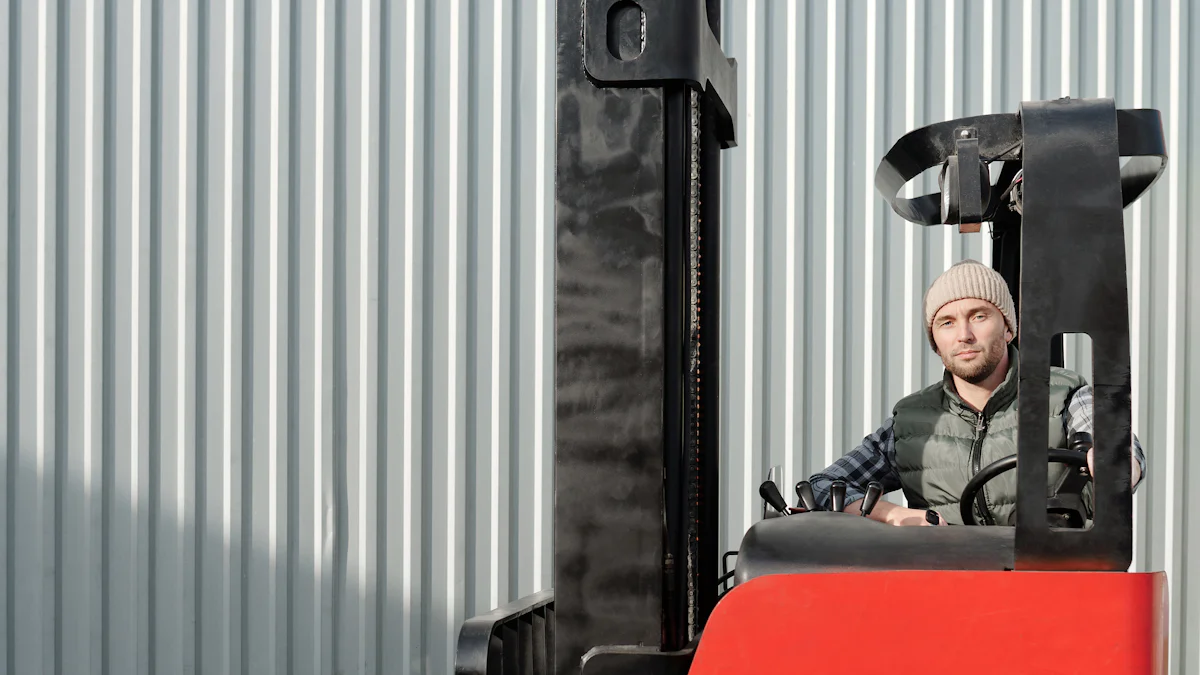
Understanding how high does a pallet jack lift is crucial for efficient warehouse operations. This section will delve into the significance of lift heights, covering key points such as the diverse types of pallet jacks available and their respective maximum capacities. Moreover, it will emphasize the practicality of an infographic that offers a quick reference guide for lift height specifications.
Overview of Pallet Jacks
When exploring the realm of pallet jacks, it becomes evident that they come in various types to cater to different operational needs within warehouses and logistics settings. Understanding these distinctions is crucial for optimizing efficiency in material handling processes.
Types of Pallet Jacks
Manual Pallet Jacks: These traditional pallet jacks are manually operated and are commonly used for standard lifting tasks within warehouses. Electric Pallet Jacks: In contrast, electric pallet jacks are powered by electricity, offering enhanced ease of use and efficiency in operations. High-Lift Pallet Jacks: High-lift pallet jacks stand out with their ability to elevate loads to impressive heights, making them ideal for specialized warehousing requirements.
Applications in Warehousing
Standard Operations: Manual and electric pallet jacks are often employed for everyday warehousing activities such as transporting goods over short distances or loading/unloading trucks. Specialized Tasks: On the other hand, high-lift pallet jacks excel in scenarios where lifting loads to significant heights is necessary, enabling operations that involve multi-level racking systems or elevated storage areas.
How High Does a Pallet Jack Lift?
Delving into the lift capabilities of pallet jacks unveils a spectrum of lift heights that align with diverse operational demands. From standard lift heights that meet typical requirements to maximum lift heights that push boundaries, each type of pallet jack offers unique advantages based on its lifting capacity.
Standard Pallet Jacks
Lift Heights
Pallet jacks play a pivotal role in warehouse operations, offering a reliable solution for lifting and moving heavy loads efficiently. When it comes to how high does a pallet jack lift, standard pallet jacks are known for their consistent performance within a typical range of lift heights. Understanding the lift capacities of these essential tools is crucial for optimizing workflow and ensuring seamless material handling processes.
Typical Range
The typical range of lift heights for standard pallet jacks varies depending on the model and design specifications. These versatile tools are capable of lifting loads to an average height that meets the standard requirements of most warehouse environments. With a focus on practicality and functionality, standard pallet jacks offer a reliable solution for everyday lifting tasks, providing convenience and efficiency in material handling operations.
Maximum Capacity
In addition to their typical lift range, standard pallet jacks boast impressive maximum capacities that cater to various load-bearing needs. The maximum capacity of a standard pallet jack reflects its ability to handle heavier loads with ease, ensuring optimal performance and safety during lifting operations. By understanding the maximum capacity of these essential tools, warehouse operators can make informed decisions when selecting the right equipment for their specific requirements.
Use Cases
Standard pallet jacks find widespread application across different warehousing scenarios, offering versatility and reliability in various operational contexts. From everyday warehousing tasks to addressing specific limitations, these essential tools play a vital role in streamlining material handling processes and enhancing overall efficiency.
Everyday Warehousing
In everyday warehousing operations, standard pallet jacks serve as indispensable assets for transporting goods, loading/unloading trucks, and organizing inventory within limited spaces. Their ease of use and maneuverability make them ideal for routine tasks that require frequent lifting and movement of loads over short distances. By leveraging the capabilities of standard pallet jacks in daily operations, warehouse personnel can streamline workflow processes and ensure timely completion of tasks.
Limitations
Despite their versatility and utility, standard pallet jacks have certain limitations that need to be considered when incorporating them into warehouse operations. These limitations may include restrictions on lift heights beyond the typical range or challenges in handling exceptionally heavy or oversized loads. Warehouse managers should assess these limitations carefully to determine the suitability of standard pallet jacks for specific tasks and ensure optimal performance without compromising safety standards.
High-Lift Pallet Jacks

High-lift pallet jacks are a game-changer in the realm of material handling, offering unparalleled capabilities in lifting loads to impressive heights. These specialized tools can elevate goods to heights up to 833mm, providing a versatile solution for scenarios that demand efficient vertical transportation.
Lift Heights
Typical Range
The lift heights achieved by high-lift pallet jacks set them apart from standard models, allowing operators to access elevated spaces with ease. With the ability to raise loads significantly higher than traditional pallet jacks, these specialized tools cater to unique warehousing requirements that involve multi-level storage systems or elevated work areas.
Maximum Capacity
In addition to their remarkable lift heights, high-lift pallet jacks boast impressive maximum capacities that ensure the safe and efficient handling of heavy loads. By combining exceptional lifting capabilities with robust load-bearing capacities, these tools empower warehouse personnel to streamline operations and optimize productivity in challenging environments.
Use Cases
Specialized Warehousing
High-lift pallet jacks find invaluable applications in specialized warehousing settings where lifting goods to considerable heights is essential. Whether navigating through tight spaces or accessing elevated storage locations, these versatile tools offer a practical solution for addressing vertical transportation needs efficiently. By leveraging the unique capabilities of high-lift pallet jacks, warehouse operators can enhance workflow processes and maximize space utilization within their facilities.
Advantages and Disadvantages
When considering the advantages of utilizing high-lift pallet jacks, it becomes evident that these tools offer unparalleled versatility and efficiency in material handling operations. The ability to lift loads up to 33” high eliminates the need for additional lifting equipment, streamlining processes and reducing operational costs. Moreover, high-rise pallet jacks provide a cost-effective solution for accessing elevated storage areas without requiring complex machinery or extensive training.
On the other hand, it is essential to acknowledge the limitations associated with high-lift pallet jacks. While these tools excel in lifting goods to significant heights, they may have restrictions when it comes to maneuvering in confined spaces or handling oversized loads. Warehouse managers should assess these limitations carefully and implement appropriate safety measures to mitigate potential risks associated with using high-lift pallet jacks in their operations.
Electric Pallet Jacks

Lift Heights
Electric pallet jacks are renowned for their impressive lift heights that cater to a wide range of warehousing needs. Understanding the lift capabilities of these advanced tools is essential for optimizing material handling processes and ensuring operational efficiency.
Typical Range
The typical range of lift heights offered by electric pallet jacks varies based on the model and design specifications. These innovative tools can elevate loads to heights ranging from 7 to 9 inches off the ground, providing a versatile solution for lifting goods in diverse warehouse environments. By leveraging the consistent performance and reliability of electric pallet jacks within this typical range, warehouse operators can streamline workflow processes and enhance productivity in material handling operations.
Maximum Capacity
In addition to their typical lift range, electric pallet jacks boast impressive maximum capacities that reflect their ability to handle heavy loads with ease. With a focus on efficiency and safety, these advanced tools can support maximum capacities that meet the demands of various warehousing tasks, ensuring optimal performance during lifting operations. By considering the maximum capacity of electric pallet jacks when selecting equipment for specific requirements, warehouse personnel can make informed decisions that enhance operational effectiveness and minimize downtime.
Use Cases
Electric pallet jacks offer unparalleled advantages in enhancing operational efficiency and streamlining material handling processes within warehouses. Understanding the diverse use cases of these advanced tools is crucial for maximizing their potential benefits while addressing any inherent limitations.
Efficiency in Operations
One of the key advantages of utilizing electric pallet jacks lies in their ability to enhance operational efficiency through swift and precise lifting capabilities. By automating the lifting process, these innovative tools reduce manual effort and streamline material handling tasks, allowing warehouse personnel to optimize workflow processes and achieve higher levels of productivity. The efficiency gains achieved through the use of electric pallet jacks contribute significantly to overall operational success, enabling warehouses to meet demanding throughput requirements with ease.
Limitations
While electric pallet jacks offer numerous benefits in terms of efficiency and performance, it is important to acknowledge certain limitations associated with their use. These limitations may include restrictions on maneuverability in confined spaces or challenges related to battery life and charging requirements. Warehouse managers should carefully assess these limitations to determine the suitability of electric pallet jacks for specific tasks and implement appropriate strategies to mitigate any potential drawbacks effectively.
Selecting the appropriate pallet jack is paramount for optimizing warehouse operations and ensuring workplace efficiency. Pallet Jacks have been raising not only pallets but workplace productivity and safety for decades. With the evolution of technology, future trends in pallet jack design are expected to focus on enhancing lifting capacities and streamlining material handling processes. It is crucial for businesses to stay informed about these advancements to make informed decisions when investing in equipment. Remember, understanding how high does a pallet jack lift is key to seamless operations.
Post time: May-27-2024
